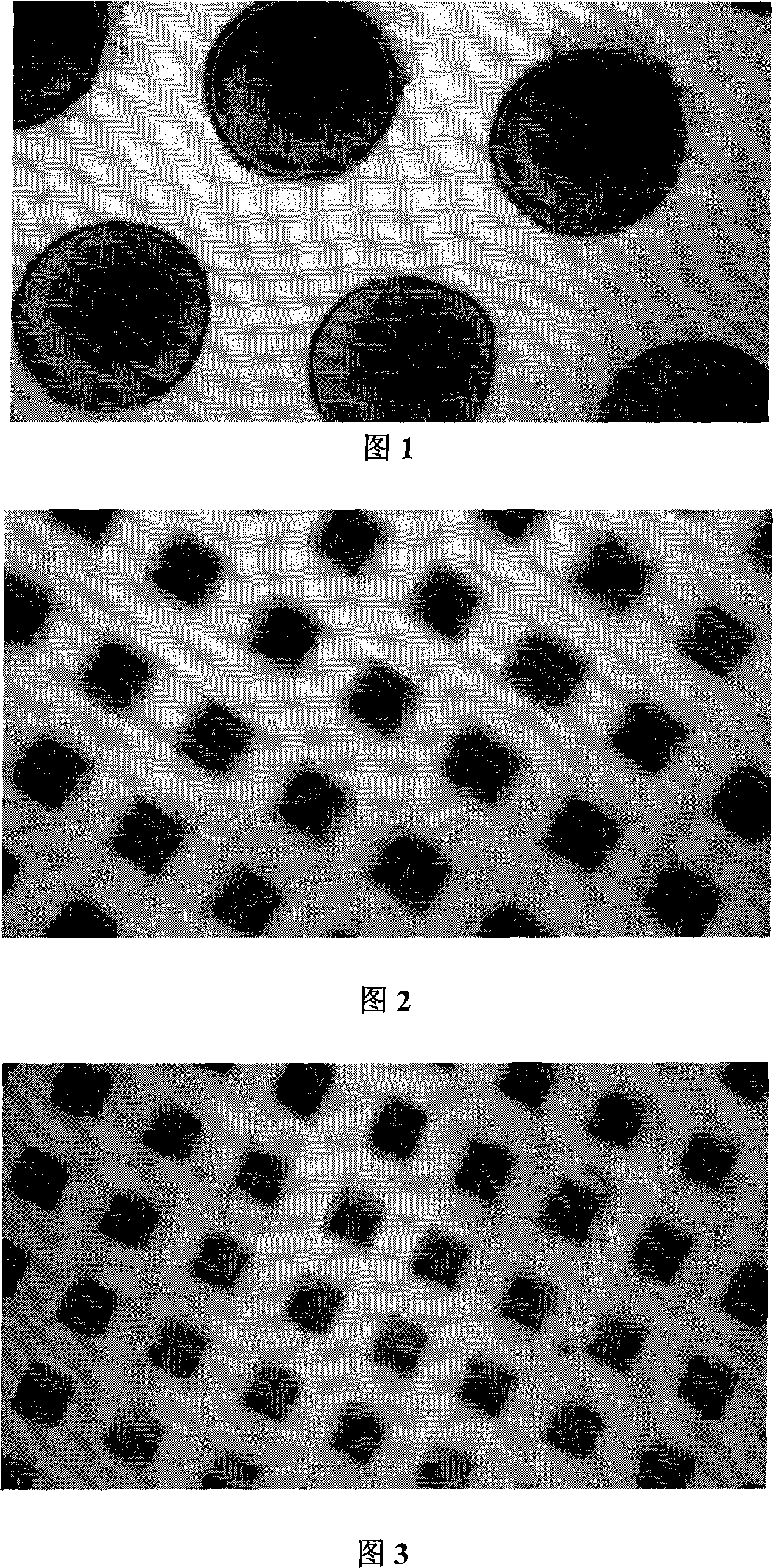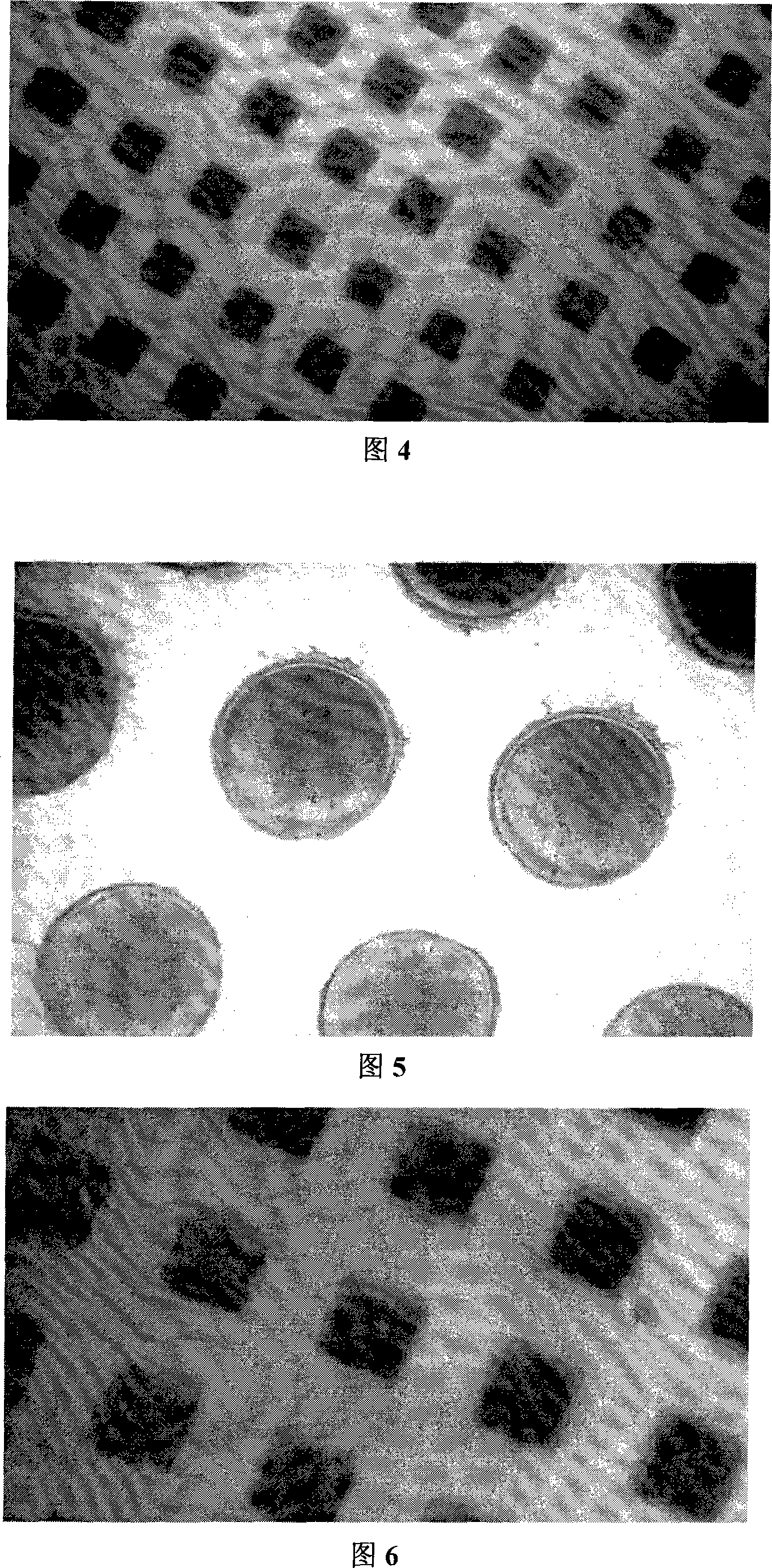Making method for transmission array of field radiation cathode carbon nano pipe
A field emission cathode and carbon nanotube technology, which is applied in cold cathode manufacturing, discharge tube/lamp manufacturing, electrode system manufacturing, etc., to achieve the effects of simple process, cost saving and low cost
- Summary
- Abstract
- Description
- Claims
- Application Information
AI Technical Summary
Problems solved by technology
Method used
Image
Examples
Embodiment 1
[0023] Embodiment 1: In this embodiment, a silicon wafer is used as a substrate and a metal mask is used as an example for illustration. Specific steps are as follows:
[0024] 1. Use semiconductor standard cleaning technology for silicon wafers (such as: Yan Zhirui, Development Direction of Semiconductor Silicon Wafer Cleaning Technology, Special Equipment for Electronic Industry, 2003, September, p23-26), to clean single-sided polished silicon wafers.
[0025] 2. Attach a metal mask with holes and regularly arranged on a clean silicon wafer, and use magnetron sputtering to coat a metal Sn film with a thickness of about 50 nanometers. A Ni catalyst layer is then plated on it, with a thickness of about 20 nanometers. A Ni / Sn binary composite catalyst array layer is formed.
[0026] 3. The substrate is plated with the Ni / Sn binary composite catalyst array facing down, facing the middle of the burning ethanol (analytical pure) flame for 1-30 minutes, and growing carbon nanotub...
Embodiment 2
[0029] Embodiment 2: In this embodiment, a metal molybdenum sheet is used as a substrate, and conventional photolithography technology is used as an example for illustration. Specific steps are as follows:
[0030] 1. Use deionized water, acetone and absolute ethanol to repeatedly ultrasonically clean the molybdenum sheet.
[0031] 2. Traditional semiconductor photolithography technology uses magnetron sputtering to coat metal Zn film with a thickness of about 50 nanometers, and makes indium tin alloy lattice on molybdenum sheet. A Fe-Ni composite catalyst layer is plated on it by a sputtering coating process, and the catalyst layer has a thickness of about 20 nanometers. A FeNi / Zn composite catalyst array layer is formed.
[0032] 3. Put the substrate plated with the FeNi / Zn composite catalyst array face down, facing the middle of the burning acetylene flame for 1-30 minutes, and grow carbon nanotubes on the catalyst. Fig. 2 is an optical microscope photo of a carbon nanot...
Embodiment 3
[0035] Embodiment 3: In this embodiment, a metal tantalum sheet is used as a substrate and conventional photolithography technology is used as an example for illustration. Specific steps are as follows:
[0036] 1. Use deionized water, acetone and absolute ethanol to repeatedly ultrasonically clean the tantalum sheet.
[0037] 2. Traditional semiconductor photolithography technology uses sputtering coating technology to make indium-tin alloy lattices on tantalum wafers, with a thickness of about 10 nanometers, and then plate a Ni catalyst layer on them, with a thickness of about 10 nanometers. A Ni / InSn composite catalyst array layer is formed.
[0038] 3. The substrate plated with the Ni / InSn composite catalyst array faces downward, facing the middle of the burning ethylene propanol flame for 1-30 minutes, and growing carbon nanotubes on the catalyst. Fig. 3 is an optical microscope photo of a carbon nanotube array.
[0039] 4. The tantalum sheet with nanotubes is placed o...
PUM
| Property | Measurement | Unit |
|---|---|---|
| thickness | aaaaa | aaaaa |
Abstract
Description
Claims
Application Information
 Login to View More
Login to View More - R&D
- Intellectual Property
- Life Sciences
- Materials
- Tech Scout
- Unparalleled Data Quality
- Higher Quality Content
- 60% Fewer Hallucinations
Browse by: Latest US Patents, China's latest patents, Technical Efficacy Thesaurus, Application Domain, Technology Topic, Popular Technical Reports.
© 2025 PatSnap. All rights reserved.Legal|Privacy policy|Modern Slavery Act Transparency Statement|Sitemap|About US| Contact US: help@patsnap.com


